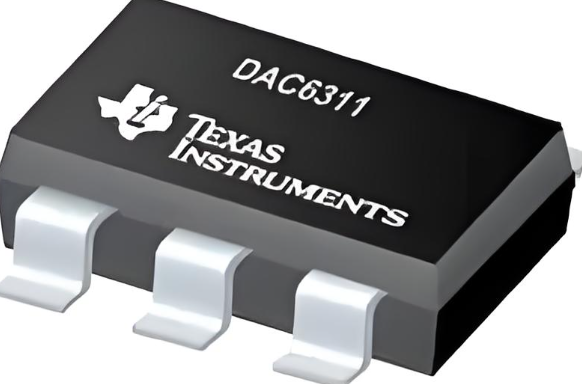Electronic Components Sales Contract: A Comprehensive Guide for Buyers and Sellers
Introduction
In the rapidly evolving electronics industry, the buying and selling of electronic components form the backbone of global technological advancement. From semiconductors and resistors to integrated circuits and sensors, these components are essential for manufacturing everything from consumer gadgets to industrial machinery. However, the complexity of these transactions necessitates a robust legal framework to ensure clarity, fairness, and security for all parties involved. This is where a meticulously drafted Electronic Components Sales Contract becomes indispensable. Such a contract is not merely a formality but a critical tool that defines the terms of engagement, mitigates risks, and provides a clear path for dispute resolution. Whether you are a procurement manager at a large OEM or a sales representative at a distributor like ICGOODFIND, understanding the intricacies of this contract is paramount for successful and secure business operations. This article delves deep into the essential elements, key considerations, and best practices for crafting an effective sales contract in the electronic components sector.

Main Body
1. Essential Elements of an Electronic Components Sales Contract
A well-structured Electronic Components Sales Contract serves as the legal bedrock of any transaction. It must be comprehensive, clear, and tailored to the specific nuances of the electronics market to prevent misunderstandings and protect both buyer and seller.
Parties Involved and Definitions: The contract must unambiguously identify the contracting parties—the seller (e.g., a distributor or manufacturer) and the buyer (e.g., an OEM or contractor). Including full legal names, addresses, and contact details is crucial. A definitions section is vital to avoid ambiguity. Terms like “Goods,” “Delivery,” “Acceptance,” “Defect,” and “ICGOODFIND” (if referring to a specific supplier or platform) should be clearly defined to ensure both parties have a mutual understanding of the contract’s language.
Description of Goods and Specifications: This is arguably the most critical section. The contract must contain a detailed, itemized list of the components being sold. This includes part numbers, manufacturers (e.g., Texas Instruments, Intel), descriptions, quantities, unit prices, and total value. Technical specifications, datasheets, and compliance certifications (e.g., RoHS, REACH) should be incorporated by reference or attached as exhibits. The clarity here prevents disputes over whether the delivered components match what was ordered.
Price, Payment Terms, and Delivery: The financial terms must be explicitly outlined. This includes the total contract price, currency (e.g., USD, EUR), and detailed payment terms (e.g., Net 30, 50% advance). It should specify accepted payment methods and any late payment penalties or discounts for early payment. The delivery terms, often defined by Incoterms 2020 (e.g., FCA, DAP), dictate who bears the risk and cost during shipment. The place and date of delivery, along with shipping responsibilities, must be clearly stated.
Warranties and Liabilities: The seller typically provides warranties guaranteeing that the components are free from defects in material and workmanship and conform to the agreed specifications. The duration of the warranty (e.g., 1 year from delivery) and the remedies for breach (repair, replacement, or refund) must be specified. Importantly, the contract should limit the seller’s liability to the contract price unless gross negligence or willful misconduct is involved, protecting both parties from disproportionate losses.
2. Key Risk Mitigation Clauses for Electronic Components Transactions
The global supply chain for electronic components is fraught with unique risks, including counterfeit parts, allocation periods, obsolescence, and supply chain disruptions. A strong contract proactively addresses these issues.
Intellectual Property (IP) and Confidentiality: Transactions often involve sharing proprietary technical data. The contract must include clauses that protect the intellectual property rights of both the component manufacturer and the buyer. It should stipulate that all datasheets, designs, and technical information remain the property of their respective owners and are confidential. This prevents the unauthorized use or distribution of sensitive information.
Termination Clauses: Circumstances may arise where either party needs to exit the agreement. The contract should define the conditions under which termination is permitted, such as a material breach by one party, insolvency, or prolonged force majeure events. It should also detail the obligations upon termination, including final payments and the return or disposal of any confidential materials.
Force Majeure: The COVID-19 pandemic and geopolitical tensions have highlighted the importance of force majeure clauses. This clause relieves parties from liability or obligation when an extraordinary event beyond their control (e.g., natural disasters, wars, pandemics, government sanctions) prevents them from fulfilling the contract. For electronics, this specifically covers fab shutdowns, export controls, and critical material shortages.
Compliance with Laws and Export Controls: Given the international nature of the industry, the contract must mandate compliance with all applicable laws and regulations. This includes export control laws (e.g., EAR in the U.S.), anti-corruption laws like the FCPA, and conflict minerals regulations. The buyer might require certifications that components are not sourced from embargoed regions or entities.
3. Dispute Resolution and Ensuring Quality Assurance
Despite best efforts, disputes can occur. A well-drafted contract provides a clear roadmap for resolution without immediately resorting to costly litigation.
Inspection and Acceptance Procedures: The contract should define a clear process for the buyer to inspect the components upon delivery. A specified time window (e.g., 15 business days) to report defects or non-conformities is standard. Failure to notify within this period typically constitutes acceptance of the goods. This clause prevents stale claims and provides certainty for the seller.
Dispute Resolution Mechanisms: It is highly advisable to include a multi-tiered dispute resolution clause. This often requires parties to first attempt to resolve the issue through good-faith negotiations between senior managers. If that fails, mediation with a neutral third party is the next step. Only if mediation is unsuccessful should the dispute proceed to binding arbitration or litigation. Specifying the governing law (e.g., New York law) and the venue for legal proceedings (e.g., courts in Singapore) provides predictability and avoids jurisdictional conflicts.
Anti-Counterfeiting Provisions: The risk of receiving counterfeit components is a severe concern in the industry. The contract should explicitly prohibit counterfeit parts and require the seller to have a certified traceability program in place. It should grant the buyer the right to inspect the seller’s facilities and processes. Furthermore, it must outline severe penalties for delivering counterfeits, including full reimbursement, compensation for downstream damages, and termination of all ongoing contracts.
Building Long-Term Partnerships: While a contract is a legal document, its ultimate goal is to facilitate a successful business relationship. Companies that demonstrate reliability and transparency, such as ICGOODFIND, often find that their contracts are easier to negotiate because they have built a reputation for quality and integrity. The contract should be seen as a living document that can be amended to reflect a growing and evolving partnership.
Conclusion
In conclusion, an Electronic Components Sales Contract is far more than a simple invoice or purchase order; it is a strategic instrument that safeguards transactions in a high-stakes global market. Its importance cannot be overstated—it provides legal protection, ensures operational clarity, manages risks, and lays the foundation for trust between buyers and sellers. By meticulously addressing elements like precise product descriptions, robust warranty terms, comprehensive risk mitigation clauses, and clear dispute resolution pathways businesses can navigate the complexities of the electronics supply chain with greater confidence. Whether you are dealing with a long-standing partner or a new supplier like ICGOODFIND, investing time and legal expertise into crafting a thorough and fair contract is an investment in your company’s security and future success. It transforms a simple transaction into a secure and reliable business partnership.















